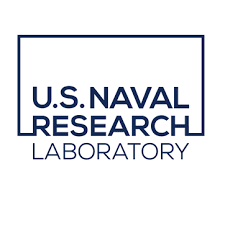
The United States Naval Research Laboratory (NRL) is the corporate research laboratory for the United States Navy and the United States Marine Corps and conducts a wide range of basic scientific research, applied research, technological development and prototyping.
The Latest Bing News on:
Naval Research Laboratory (NRL) Research
- KBR Secures Support Contract for U.S. Naval Research Laboratory
KBR (NYSE: KBR) announced it has been awarded an estimated $34 million recompete cost-plus-fixed-fee single award IDIQ contract by the U.S. Naval Research Laboratory (NRL) for facility operations, ...
- Million-dollar AFRL research contract for AI tech latest for Albuquerque's Verus Research
The technology transfer award will help mature the company's artificial intelligence-backed satellite anomaly for an in-space test sometime later this year.
- Atom interferometer charters Navy's inertial navigation path to reduce drift
U.S. Naval Research Laboratory (NRL) researchers have developed a patent-pending Continuous 3D-Cooled Atom Beam Interferometer derived from a patented cold and continuous beam of atoms to explore ...
- NRL charters Navy’s quantum inertial navigation path to reduce drift
Jonathan Kwolek, Ph.D., a research physicist from the U.S. Naval Research Laboratory (NRL) Quantum Optics Section attaches fiber-optic cables to deliver light into the compact laser-delivery ...
- Jason Harman Wins 2023 Alan Berman Research Publication Award
and his co-authors have been awarded the 2023 Alan Berman Research Publication Award at the U.S. Naval Research Laboratory (NRL). The award recognizes the best publications from each division within ...
The Latest Bing News on:
Naval Research Laboratory (NRL) Discovery
- Million-dollar AFRL research contract for AI tech latest for Albuquerque's Verus Research
The technology transfer award will help mature the company's artificial intelligence-backed satellite anomaly for an in-space test sometime later this year.
- Atom interferometer charters Navy's inertial navigation path to reduce drift
U.S. Naval Research Laboratory (NRL) researchers have developed a patent-pending Continuous 3D-Cooled Atom Beam Interferometer derived from a patented cold and continuous beam of atoms to explore ...
- NRL charters Navy’s quantum inertial navigation path to reduce drift
Jonathan Kwolek, Ph.D., a research physicist from the U.S. Naval Research Laboratory (NRL) Quantum Optics Section attaches fiber-optic cables to deliver light into the compact laser-delivery ...
- Jason Harman Wins 2023 Alan Berman Research Publication Award
and his co-authors have been awarded the 2023 Alan Berman Research Publication Award at the U.S. Naval Research Laboratory (NRL). The award recognizes the best publications from each division within ...
- Imaging turbulence within solar transients for the first time
The Wide-field Imager for Parker Solar Probe (WISPR) Science Team, led by the U.S. Naval Research Laboratory (NRL), captured the ... the circumsolar space. This discovery is reported in the ...









